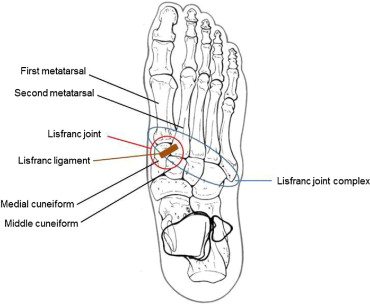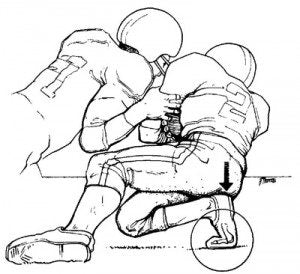Lisfranc Ligament Injury
A Lisfranc ligament tear, also known as a midfoot sprain or a Lisfranc ligament failure, is a foot injury that is not very common among the general population, though it is seen more often among athletes, especially football linemen. This, along with the fact that symptoms are relatively subtle in instances of moderate or mild sprains can make a diagnosis of an injury to the midfoot region tough without a Lisfranc ligament MRI. Indeed, even with the use of x-ray images, misdiagnosis is relatively common. Misdiagnosis is troubling as this delays the Lisfranc injury treatment necessary for getting one back to top-level performance and for preventing long-term damage.
Depending upon the severity of the Lisfranc injury, symptoms range from pain, swelling and bruising in the midfoot region to visible deformity of the foot and an inability to bear weight.
Lisfranc Ligament Anatomy
There are a number of ligaments in the midfoot region, but the term Lisfranc ligament refers to the ligament that stretches from the medial cuneiform to the plantar medial of the second metatarsal. In about one-fifth of patients, this band is divided into two bands.
This ligament is the main stabilizer between the first and second metatarsal where injury typically occurs as no ligaments bind the two bones together. A major fracture or fracture-dislocation will likely coincide with a Lisfranc ligament rupture.
 Lisfranc Ligament Tear Cause
Lisfranc Ligament Tear Cause
A Lisfranc ligament sprain and other such injuries to the midfoot can be caused by a high energy force being placed on the midfoot, such as in a vehicle crash, a fall from a height or an industrial accident.
Damage to Lisfranc’s ligament can also be mechanical in nature, with injuries occurring when the foot is flexed downward and axial loading occurs. This might happen if one stumbles when going down the stairs, during sports that involve running or jumping or if force is applied to a raised heel. One might also incur a Lisfranc ligament sprain if one plants a cleated foot and then turns suddenly.
 Lisfranc Ligament Injury Treatment
Lisfranc Ligament Injury Treatment
Mild to moderate Lisfranc ligament sprains can sometimes be treated without surgery via the use of a fracture boot and crutches for six to eight weeks, followed by limited weight-bearing with the help of a post-op shoe or boot.
However, when a tear to the Lisfranc ligament coincides with a fracture or dislocation, surgery will be needed to repair the damage, followed by a long period of wearing an immobilizing foot boot and eventually limited weight bearing with the use of a walking boot or shoe, such as BraceAbility’s Short Cam Walker Boot. Once the injury has healed to a certain point (determined by your doctor), one will transition to rigid post-op shoes with rigid arches or arch support inserts.








 Lisfranc Ligament Tear Cause
Lisfranc Ligament Tear Cause Lisfranc Ligament Injury Treatment
Lisfranc Ligament Injury Treatment

